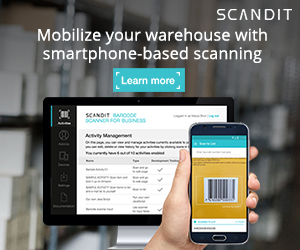Supply chain risk and the resulting disruption is a leading cause of business volatility. With more companies expanding into new and often emerging markets – using more complex and extended networks of suppliers and partners – the supply chain is at once a growth enabler and a key source of risk. This is an area where we as an industry cannot afford to be complacent.
|
The U.S. Roadmap for Material Handling & Logistics predicts that—in a scant three years—there will be 1.4 million new jobs created in our field. And to fill those jobs, the industry must find ways to attract demographics that, historically, haven’t comprised a significant part of its workforce. Among those prospective groups are women. MHI Solutions talked to seven women who’ve established successful supply chain careers. All are enthusiastic about their experiences in the industry and the opportunities each has had. And, they’re eager to share their insights in hopes of encouraging other women to join their ranks.
|
UPS recently rolled out 100 industrial-grade 3-D printers in its Louisville, KY hub. They are testing to see if 3-D printing centers could shorten supply chains, cut costs and give them a better chance of taking advantage of the emerging trend of local production and delivery.
|
Distribution centers are growing massively in size due to the explosion of SKUs and increasing demands to supply goods to customers as soon as possible. There are many reasons for this change.
|


MHI recently launched a new video platform – MHI view. MHI view content is designed to spark supply chain innovation by sharing useful information about the industry’s maturing, growing, and emerging technologies that were identified in the 2015 MHI Annual Industry Report.
|
Ever since the 2011 Japanese tsunami shut down much of Toyota’s parts and manufacturing capabilities, logistics managers have been looking more closely at the vulnerabilities in their own supply chains and searching for ways they can quickly rebound from both large and small disruptions to them.
|
When faced with a risk to your supply chain, you really only have four options. You can ignore it, and hope that it goes away. You can accept it, and deal with the consequences. You can transfer the risk to someone else, often by buying insurance. Or, you can choose to mitigate the risk by doing something that reduces the probability or the probable impact.
|
People and equipment share the space in a warehouse with product inventory. When anything moves from one place to another, there is the risk of accidents, injuries or product, equipment and facility damage. By installing appropriate protective barriers, many of those negative consequences can be prevented.
|


Deloitte’s Scott Sopher will talk about the trends and technologies transforming supply chains identified in the 2015 MHI Annual Industry Report at the Supply Chain Outlook Summit in November.
|
The use of radio frequency identification (RFID) and global positioning system (GPS) technologies is mitigating the risks within supply chains by minimizing financial losses due to downtime, reducing the chance for non-compliance with government regulations on product safety as well as corporate governance, and even protecting the physical safety of workers.
|
Today’s pharmaceutical sector looks healthy on the surface. It’s growing and expanding into new markets. It’s taking advantage of increased understanding about diseases and treatments, and society increasingly relies on "better living through chemistry."
|
Many of us, from early on, are captivated by the feats cranes can accomplish— from the monstrous machines towering over construction sites like modern-day sauropods to those swingy, jerky (and more than occasionally confounding) arcade claws.
|

A number of studies document a growing trend of U.S. businesses bringing manufacturing operations back to the U.S.— often referred to as onshoring. In 2011, a report by The Boston Consultancy Group revealed that 24 percent of senior manufacturing executives were considering returning production to the U.S. and predicted that changes in China’s wage structure along with increased use of manufacturing technology in the U.S. would eliminate the cost advantage of manufacturing overseas.
|
Passing the buck" doesn’t work when it comes to an outsourced supply chain. Here, whatever happens—no matter how far down the line—problems, challenges or missteps will be seen as part and parcel of the company’s image. Disastrous weather affecting production? Lack of compliance with international law? A different understanding of quality controls? Labor issues? In today’s demanding, transparency-seeking marketplace, outsourcing your operations can also mean outsourcing your reputation.
|
The economic climate for the balance of 2015 and 2016 is likely to be characterized by solid U.S. economic growth, an improving global economy, modestly rising commodity prices and continued foreign exchange rate volatility. In the new Material Handling Equipment Manufacturing (MHEM) forecast models, strong equity markets, low interest rates and continued manufacturing expansion are supportive of new orders. However, a strong dollar and expected increases in interest rates are likely to slow the growth of new orders.
|
If you have not read the 2015 MHI Annual Industry Report, let me play the spoiler and give you the keys to where solutions reside. In the report, the following comment is made: "The number one barrier to investing in new technologies and innovations is the lack of a clear business case." Further, lack of capital ranks as the lowest barrier to investment. This means the market for material handling and supply chain suppliers is much larger than estimated, and that users of these products and services are experiencing confusion and uncertainty.
|
|
| |
|